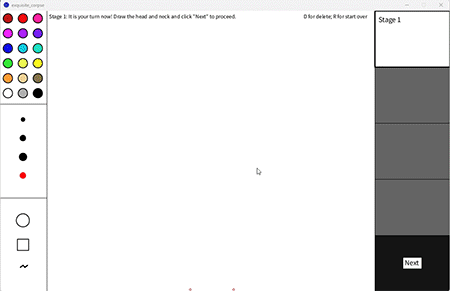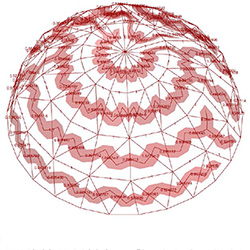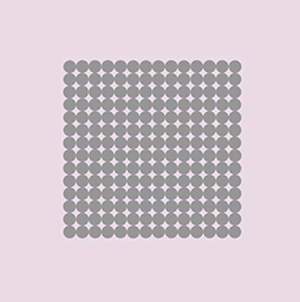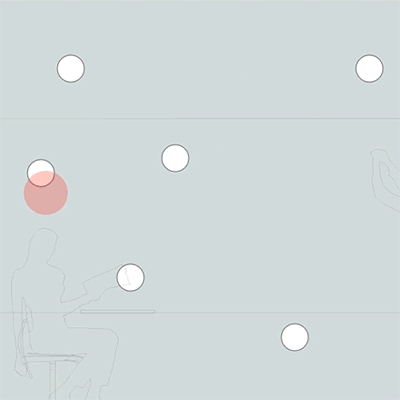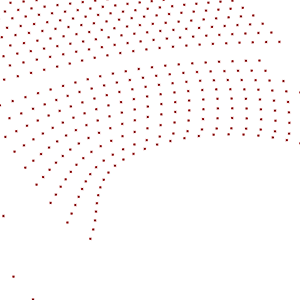Exquisite Corpse
An one-man exquisite corpse game with a divergent drawing systemSpring 2024
@Generative systems for design, 62-706, Carnegie Mellon University
Implementation tool: Processing /Java
Source code
Video: How to play
Instructor: Jingyang (Leo) Liu
Collaboration: Sherry Yujin Wu

Our team planned to devise an one-man Exquisite Corpse game, in
which a machine will draw in its turn after a user draws one’s part.
Together, they complete the entire drawing, providing the user with
a fun and imaginative experience.
We aimed at creating unexpected results utilizing parametric
tools, with the logic hidden in the computer side.
An original approach to decompose the drawing system into different hierarchies.
During the product development, we found a possibility of finding optimized styles that can be generated by collective data
from users, or exterior data.
Exquisite Corpse is a drawing method in which a collection of drawings is created, with each participant contributing a portion
without seeing the entire composition. For example, four people may each draw one allocated part of a human figure,
resulting in an unexpected and collaborative artwork.
The traditional exquisite corpse game involves players taking turns to draw on a sheet of paper, fold to conceal what they have drawn, and pass it on to the next player. The overall aim is to collaboratively create a complete figure or body. In our adaptation, we propose a game where both humans and computers contribute to the drawing process.
We plan to divide the human body into four sections, such as the Head, Torso, Glute, and Feet. Humans will be responsible for drawing the head and glute sections, while the computer will complete the remaining sections, or vice versa. Human input will provide constraints at the boundaries between sections, ensuring coherence in the final composition.
Meanwhile, computers may respond in various ways: they could mimic the style of the human drawings or adopt a completely different approach. The computer will extract certain parameters from the human drawings, including color scheme, number and thickness of strokes, preference for curve or straight lines, and positions of shapes. These parameters will guide the computer’s contributions to the drawing, ensuring some level of consistency and harmony between human and computer-generated elements. In addition to the parametric approach mentioned above, part of the drawing can also be AI-generated.
This introduces an element of unpredictability and direction to the final image, as the computer’s contributions will be influenced by both user input and AI-generated content. While the concept of the computer creating unexpected drawings has been established, further discussion is needed to determine how the computer will utilize the user-drawing data. Specifically, we need to decide which aspects of the user’s drawing, such as brush size or overall position, will trigger the computer’s abstracted contributions.
The traditional exquisite corpse game involves players taking turns to draw on a sheet of paper, fold to conceal what they have drawn, and pass it on to the next player. The overall aim is to collaboratively create a complete figure or body. In our adaptation, we propose a game where both humans and computers contribute to the drawing process.
We plan to divide the human body into four sections, such as the Head, Torso, Glute, and Feet. Humans will be responsible for drawing the head and glute sections, while the computer will complete the remaining sections, or vice versa. Human input will provide constraints at the boundaries between sections, ensuring coherence in the final composition.
Meanwhile, computers may respond in various ways: they could mimic the style of the human drawings or adopt a completely different approach. The computer will extract certain parameters from the human drawings, including color scheme, number and thickness of strokes, preference for curve or straight lines, and positions of shapes. These parameters will guide the computer’s contributions to the drawing, ensuring some level of consistency and harmony between human and computer-generated elements. In addition to the parametric approach mentioned above, part of the drawing can also be AI-generated.
This introduces an element of unpredictability and direction to the final image, as the computer’s contributions will be influenced by both user input and AI-generated content. While the concept of the computer creating unexpected drawings has been established, further discussion is needed to determine how the computer will utilize the user-drawing data. Specifically, we need to decide which aspects of the user’s drawing, such as brush size or overall position, will trigger the computer’s abstracted contributions.
As developers, we had a vision
for the computer’s output style. Sherry suggested Kandinsky-like
abstract, balanced, and colorful
drawings, which we agreed to
use as a prototype. I proposed keeping this style in mind as
a starting point. Once we’ve
established a range of styles, we
anticipate the computer consistently replicating them. Users
could trigger and select styles for their drawings, perhaps choosing
from a variety of backgrounds.
Just as noise can help AI tools produce efficient results, so can brainstorming tools that generate ideas from different directions. As we wanted to keep developing the design product for the conference, Leo, our instructor, shared his insight with us. We think Designing Interactive Systems suits our work.![]()
Just as noise can help AI tools produce efficient results, so can brainstorming tools that generate ideas from different directions. As we wanted to keep developing the design product for the conference, Leo, our instructor, shared his insight with us. We think Designing Interactive Systems suits our work.



